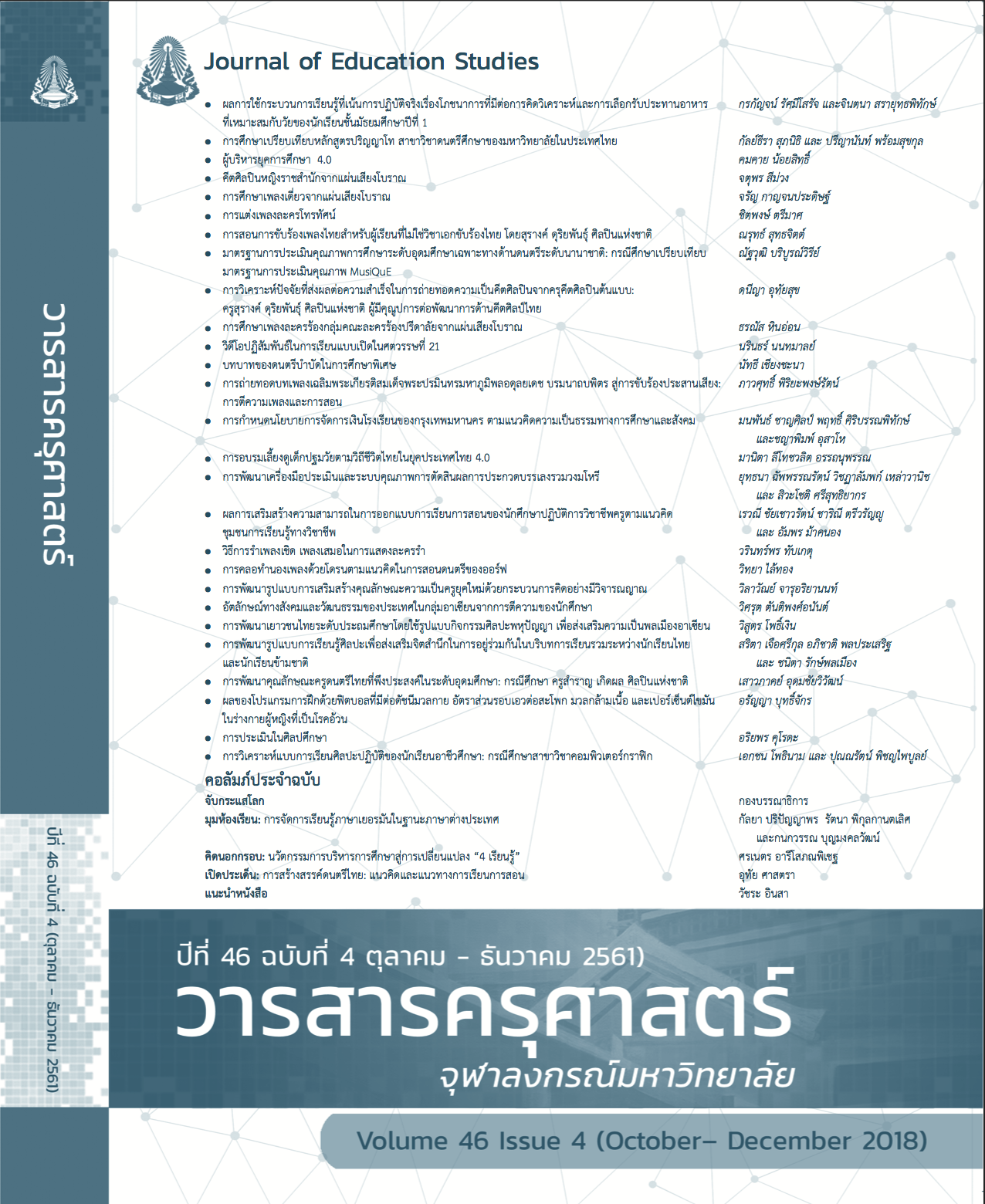การศึกษาเพลงละครร้องกลุ่มคณะละครร้องปรีดาลัยจากแผ่นเสียงโบราณ
Keywords:
PRIDALAI TROUPE, MUSICAL SONGS, GRAMOPHONE RECORDS, SIAMESEAbstract
The study aimed to: 1) trace the sequence of Pridalai Theatre Troupe’s song recordings; 2) study the classification of songs from Pridalai’s Lakhon Rong (Thai Opera) from gramophone records; and 3) examine the components of Pridalai’s songs from gramophone records. This is a qualitative study which places emphasis on the studying of history, musicology, discography, and discology. The study reveals that “Pridalai’s musical style” became known during the end of King Rama V’s reign and completely ended during the reign of King Rama VII. Later, some former actors from the Pridalai Troupe started forming their new Lakhon Rong troupes known as “The Group of Pridalai’s Lakhon Rong”; they, however, still followed and maintained Pridalai’s performance style. The group consisted of 11 troupes but only 4 troupes – Nakhon Bunterng Troupe, Thepbunterng Troupe, Pramote Nakhon Troupe, and New Pridalai Troupe – had the opportunity to record the songs. The recording of Lakhon Rong’s songs began during the end of King Rama VI’s reign; these records were made under five different record lables: Parlophone, Odeon, His Master’s Voice, Polyphon, and Bua. The recorded songs can be categorized into two groups: (1) the classical Thai songs called Kred Song Chun, and (2) the newly composed Lakhon Rong songs. In studying the components of the songs, the results showed that the play scripts were the main focus in choosing the format and singing style. The enunciation in the singing was clear. There was also a chorus group accompanied with the main melody. Some play scripts remained the same as the original scripts; otherwise, to some extent, some scripts were improved, adapted, and deleted to suit the recordings. The types of musical orchestra found in the use were Piphat Mai Khaeng (orchestra using hard mallets), Piphat Mai Nuam (ensemble using padded mallets), Khrueang Sai with Khim (string ensemble with hammered dulcimer), organs, and sometimes Saw U (low voiced bowed string) accompanied with singing. Song titles were freely given depending on the composers’ choice and the play scripts.



